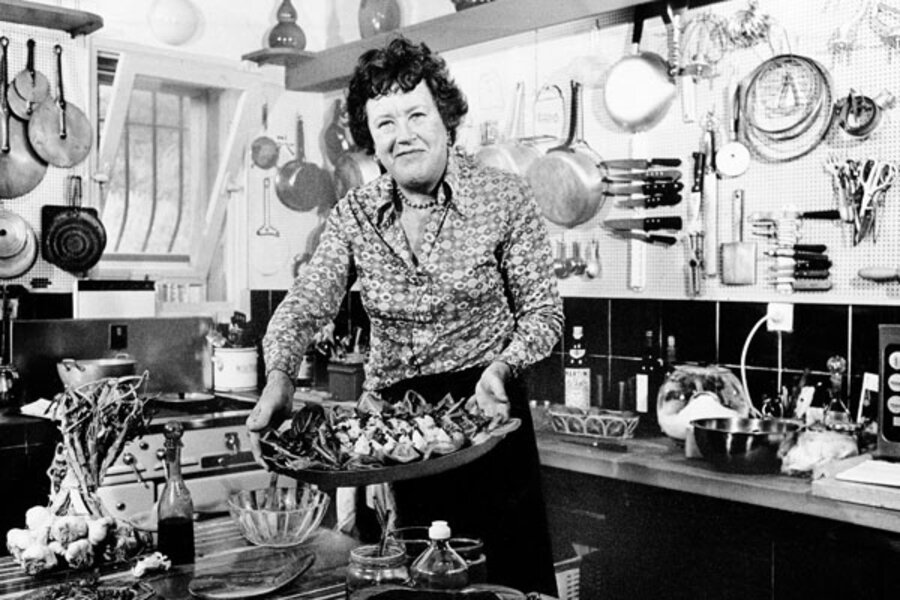Julia Child's first recipe: shark repellent
Ever since 2008, when the National Archives released thousands of documents about Julia Child's time at the Office of Strategic Services during World War II, the television chef has been America's most famous secret agent this side of Nathan Hale. And, as the Monitor's Chris Gaylord notes, compared to the young Continental Army lieutenant, Child was a pretty effective spy.
What is less well known is what Child actually did while working for the OSS, a wartime precursor to the Central Intelligence Agency. Like any good spy, Child described her work as 'clerical,' a term that doesn't begin to hint at how she would put her latent culinary skills to use in the service of her country.
According to the CIA's website, the Navy had a shark problem. Efforts to use undersea mines against German U-boats were hampered by curious sharks that would bump up against the explosives, much to the detriment of both the sharks and the US war effort.
And, as anyone familiar with the awful story of the USS Indianapolis knows, sharks also posed a grave danger to American sailors. Here's how Child explained it to Russ Parsons, food editor at the LA Times, as recounted in a 2008 blog post.
[W]e couldn't get the Navy to admit that sharks ate Navy men. They didn't like to say, 'Dear Mrs. So-and-So, your son was eaten by a shark.' They'd much rather say: 'Your gallant son was lost at sea.' Then one day, a shark was caught and they opened him up and found he had some undigested parts of people in his stomach. One of them still had fingerprints, and it turned out to be a Navy man. There was such glee in our office that they had finally proven a Navy man could be eaten by a shark.
At the time, there was only one known way to deter a shark: by exposing it to the rotting remains of another shark. Perhaps recognizing that requiring sailors to perform their duties with decomposing shark carcasses strapped to them would negatively impact morale, the OSS set about creating a chemical shark repellent.
“I could boil water for tea but my first big recipe was shark repellant that I mixed in a bathtub for the Navy, for the men who might get caught in the water,” said Child once to her producer Margaret Sullivan, according to a post on Examiner.com.
The result was known as "Shark Chaser," a mix of black dye and copper acetate bound up in water-soluble wax. The mixture was placed into a pouch that in 1944 the War Department began issuing to sailors and pilots.
Unfortunately for all too many of those servicemen, the stuff was useless, which just goes to show that, even early on, the Lady of the Ladle was simply incapable of cooking up something that tasted bad. Despite its ineffectiveness, the recipe was used all the way into the Vietnam War.
Today, scientists have a slightly better sense of what drives sharks away. A story in National Geographic, published just two weeks before Julia Child passed away in 2004, describes promising research into chemicals thought to be released by sharks as a warning to other sharks. Researchers successfully tested the chemicals on six species of shark. Today, you can purchase sprays and other products that, according to their developers, will make sharks approaching you less likely to think, "Bon Appetit!"





